Bathroom Remodels: 3 Budgets, 3 Bathrooms
In years past, the bathroom was often considered a utilitarian space – get in, get the job done, get out. Not so much any more! Many consider their bathroom to be a space to unwind or relax—desiring spa-like amenities. If your current bathroom is woefully insufficient and outdated, now may be the time to take inventory of what is out of date or not functioning well.
From soaking tubs to curbless walk-in showers, the remodeling possibilities are endless, albeit sometimes overwhelming. If you are ready to update your bathroom but confused about where to start, how long it will take and how much it will cost, Riverside Construction is ready to help. Our four-step Design Build process takes you step-by-step through the renovation process while ensuring you end up with the bathroom you envisioned all along, delivered on time and on budget.
Speaking of budget, a common question we get from homeowners is how much is this bathroom renovation going to cost? While each project is different—based on size, scope and materials—we’ve outlined three types of bathroom remodels to give you a good idea of the options you have: Basic, “Pull and Replace” and Custom.
The Basic or Cosmetic Bathroom Remodel

If budget is at the top of your list of requirements, a basic bathroom remodel may be the way to go. It’s amazing how simple changes can make your bathroom feel new and fresh again. A basic bathroom remodel typically runs $5,000 to $15,000 and may include:
Use of existing layout – A basic remodel leaves the current layout of the space intact, while replacing easily removed products. For example, a tub remains in the same spot, as well as a replacement sink and toilet. Not moving the plumbing and electrical components keep costs in line with the budget.
Cabinets – The price of cabinets often eats up a large part of a remodel budget. Therefore, a basic bathroom remodel typically involves reusing your existing cabinetry. However, that doesn’t mean you have to live with dated or damaged storage. Fix up any broken cabinets or replace cabinet doors. And new hardware can go a long way in breathing new life into your cabinets.
Flooring – The floor material you choose will have a direct impact on your renovation budget. Thankfully, there is a wide range of flooring materials on the market that will give you a big bang for your buck. For example, vinyl has come a long way in recent years, you can choose vinyl that looks like real wood or even leather at a fraction of the cost of its “real” counterparts.
Fixtures and Lighting – Does your bathroom faucet and vanity lighting scream 1980’s? New off the shelf faucet and lighting fixtures can make a dramatic statement in your new bathroom without breaking the bank. You could also easily swap out a toilet or sink for an updated look.
Walls – don’t forget color! If you’ve ever painted a room, you know the impact it can have on a space. New wall color and freshly painted millwork can breathe new life into your new bathroom.
Mid-Level, “Pull and Replace” Bathroom Remodel
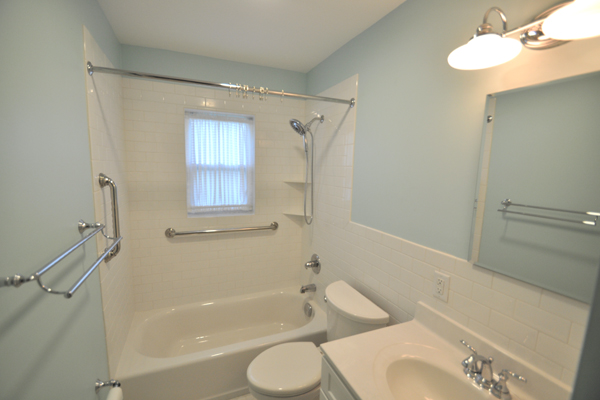
If you’re looking for a step-up from the basic remodel, then a “pull and replace” renovation may be the way to go. A “pull and replace” remodel means that while the layout may stay the same, components like cabinets, countertops, and bathtubs could be pulled out and replaced with higher quality items. Moreover, this type of remodel could include removing an existing wall to open space and allow for new features like additional cabinetry for storage or a larger walk in shower. You may also have the option to add that one special splurge you’ve always wanted – like a soaker tub or heated floors. A “pull and replace” remodel typically runs $15,000 to $35,000 and can include:
New Cabinets/Countertops – As mentioned earlier, cabinets often take up a large part of a renovation budget. A “pull and replace” remodel may include semi-custom cabinets made with higher quality finishes and more intricate door panels for a more refined look and feel. Countertops may also be replaced with any number of higher-end materials like granite or quartz.
Flooring – While a basic remodel may keep the existing flooring or include a slight material upgrade, a “pull and replace” remodel could include new flooring using a wide variety of higher quality materials including travertine, cork, pebble or porcelain tile, to name a few. This adds to the effect of your living space, and can bring a more luxurious feel to your bathroom.
Fixtures and Lighting – A “pull and replace” remodeling budget may allow you just enough extra cash to include higher quality fixtures—ones that not only look nicer, but may also last longer than less expensive, off-the-shelf fixtures. You may opt for a higher end toilet for better flushing capability, a more modern glass enclosed shower or a tiled tub deck for a new custom look. A larger budget can also enable you to become more creative with lighting options, to include dimmers for mood setting or special task lighting for grooming and makeup applications.
Walls – Beyond new paint, you may have the budget for adding interesting borders or accent tiles on the shower stalls and on other walls in the bathroom for a unique look.
The Custom Bathroom Remodel
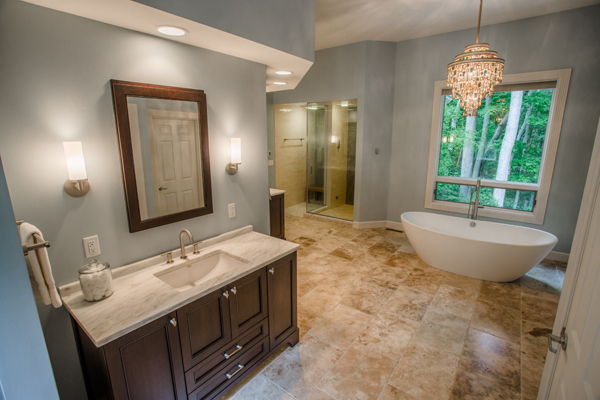
If you have aspirations of gutting your bathroom and starting over from scratch AND budget is not at the top of your priority list, then the custom bathroom remodel is a perfect choice. This may include knocking down an interior or exterior wall to expand the footprint of the space and/or completely relocating and rewiring plumbing and electrical to allow you to place toilets, sinks, showers etc. exactly where you want them. A custom deluxe bathroom remodel can run $25,000 to $75,000 and may include:
Cabinets/Countertops – From solid wood construction, to custom finishes and unique decorative cabinetry touches there is a world of choices at your disposal. When it comes to custom countertop materials, like granite, marble and quartz, your only limit is your imagination!
High-End Flooring and Tile – With a custom remodel, you could choose to incorporate different high-end materials throughout the bathroom to create your own unique custom look. For example, you could select natural stone on the floor that leads to a custom walk-in tiled shower with intricate accent boarders.
Lighting and Quality Fixtures – Varied lighting sources whether task, ambient or mood lighting (think chandelier), and high-end fixtures like rain showers, warming towel racks and touchless faucets, are all examples of what you may find in a custom deluxe bathroom remodel.
Walls – A custom remodel allows you to add detailed features like real wood beadboard, custom molding and custom window treatments to increase “the wow factor” of your new bathroom.
Ready to start remodeling your bathroom? Join us at our Kitchen and Bath Seminar to learn how to successfully remodel your home. We’d love to see you there!
If you can’t make it to the seminar, you can always schedule a conversation with one of our qualified design-build professionals to discuss your home needs, design preferences, timeline and budget. We look forward to meeting with you!
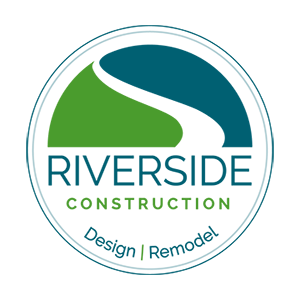
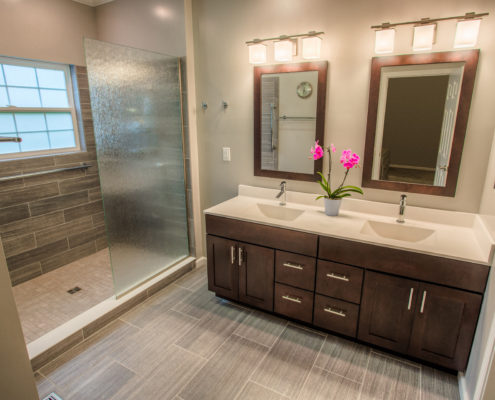
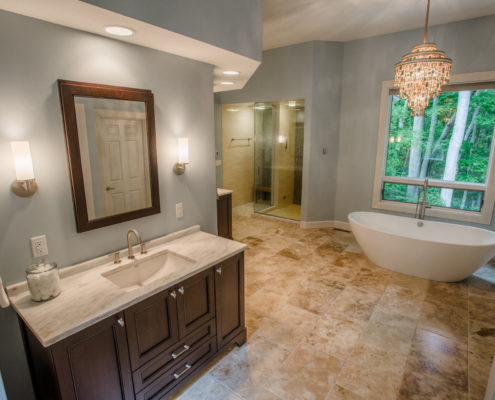
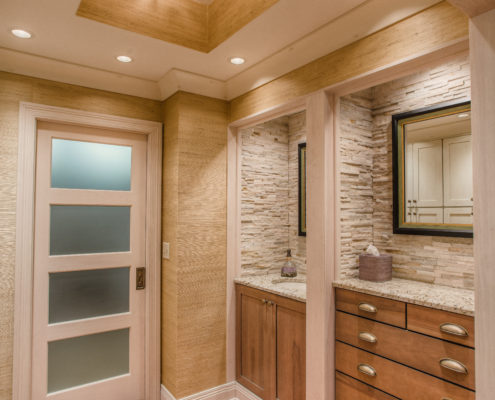
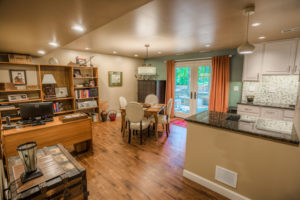
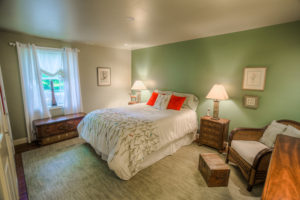
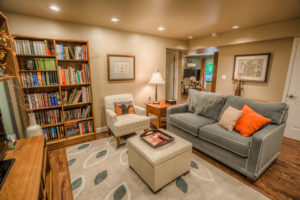
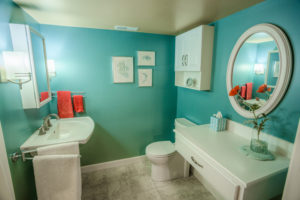
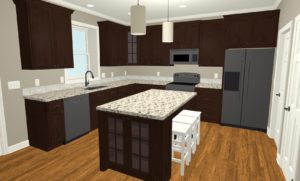
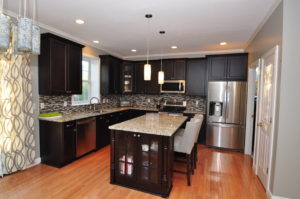
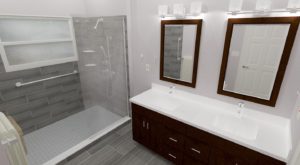
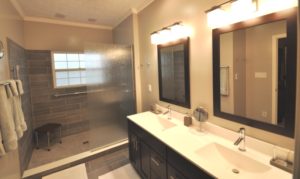
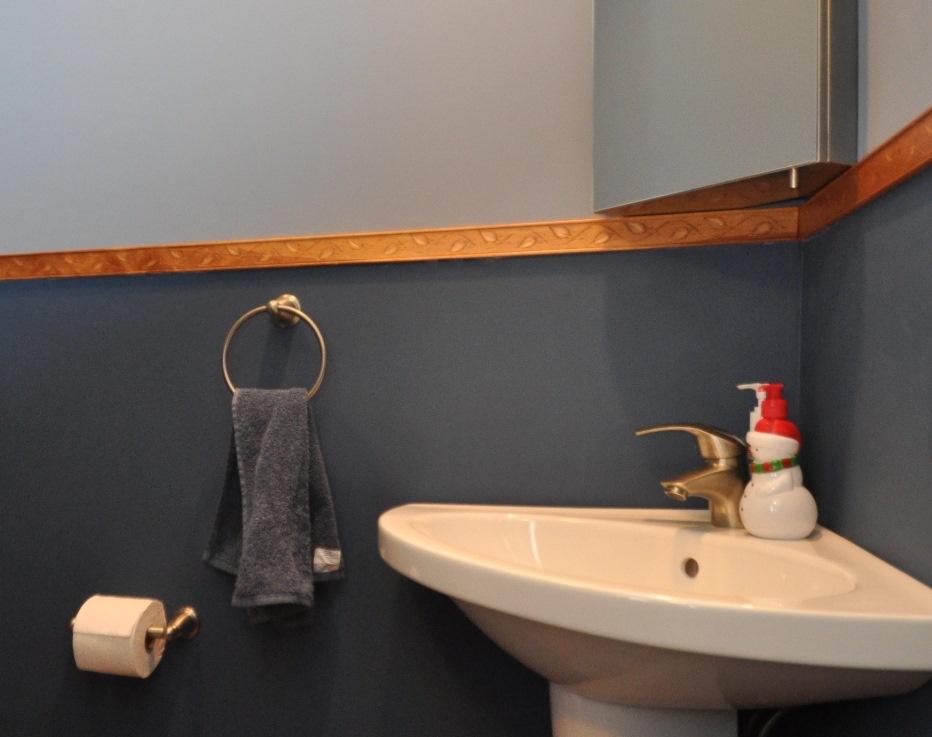 Small bathrooms can be a big headache for homeowners who want style, storage and functionality. The best way we’ve discovered to make the most of your limited space is to be incredibly intentional about how you use the space.
Small bathrooms can be a big headache for homeowners who want style, storage and functionality. The best way we’ve discovered to make the most of your limited space is to be incredibly intentional about how you use the space.

